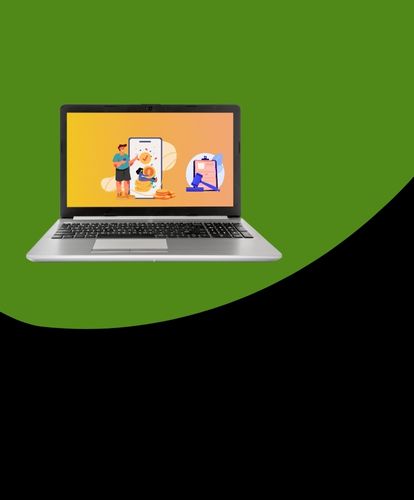

Personal finance management plays a crucial role in individuals' lives, helping them achieve financial stability, make informed decisions, and reach their financial goals. In recent years, the personal finance app market has witnessed remarkable growth, driven by the increasing need for financial literacy and digital convenience. This article aims to guide aspiring developers and entrepreneurs on how to build a personal finance app that stands out in the market and provides exceptional value to its users.
Before diving into the development process, it's essential to conduct thorough market research and analysis. Understand the target audience, their financial pain points, and their expectations from a personal finance app. Identify the existing competitors and study their strengths and weaknesses to carve out a unique proposition for your app.
To build a standout personal finance app, it's crucial to define the key features that will address users' needs effectively. Some essential functionalities include tracking income and expenses, budgeting and goal-setting capabilities, integration with bank accounts, real-time notifications and alerts, and comprehensive data visualization and reporting options.
A visually appealing and user-friendly interface is crucial to engage users and provide a seamless experience. Focus on creating an intuitive onboarding process, simplifying complex financial concepts, and designing an interface that encourages regular usage and exploration.
The backend of your personal finance app should ensure secure data management and synchronization. Implement robust database management systems, integrate APIs for seamless data exchange with financial institutions, and prioritize data security through encryption and secure authentication methods.
Choose the appropriate platform(s) for your app based on your target audience and market research. Develop a responsive and scalable app that performs optimally across various devices and operating systems. Rigorous testing and debugging are necessary to deliver a bug-free and smooth user experience.
To differentiate your app from competitors, consider incorporating useful financial tools and calculators. Retirement planning calculators, loan and mortgage calculators, investment analysis tools, and tax calculators can provide significant value to users and enhance their overall experience.
Consider leveraging advanced technologies like Artificial Intelligence (AI) and Machine Learning (ML) to provide personalized recommendations and financial insights. Implement expense categorization and auto-tagging features to automate processes, and introduce automatic bill payments and reminders to ensure users never miss payments.
Ensuring data security and privacy is of utmost importance in today's digital landscape. It involves safeguarding sensitive information from unauthorized access, use, disclosure, alteration, or destruction. Here's a brief overview of how data security and privacy can be ensured:
1. Data Encryption: Encryption is the process of converting data into a secure format that can only be accessed with the appropriate decryption key. By encrypting data at rest (stored on devices or servers) and in transit (being transmitted over networks), organizations can protect information from unauthorized access.
2. Access Control: Implementing robust access control mechanisms helps restrict data access to authorized individuals or systems. This involves defining user roles and permissions, implementing strong authentication methods (e.g., passwords, multi-factor authentication), and employing techniques such as least privilege, where users are granted only the minimum access required to perform their tasks.
3. Data Backup and Recovery: Regularly backing up critical data and establishing efficient data recovery processes are crucial for protecting against data loss or damage caused by accidents, hardware failures, or security breaches. Backups should be stored securely and tested periodically to ensure data integrity.
4. Security Audits and Testing: Conducting regular security audits and assessments helps identify vulnerabilities and weaknesses in the system. This involves penetration testing, vulnerability scanning, and code reviews to proactively detect and address potential security flaws before they can be exploited.
5. Privacy Policies and Compliance: Organizations should develop and adhere to privacy policies that clearly define how personal data is collected, used, stored, and shared. Compliance with relevant data protection regulations (e.g., GDPR, CCPA) is essential to ensure that the privacy rights of individuals are respected, and appropriate consent and disclosure practices are followed.
6. Employee Training and Awareness: Educating employees about data security best practices and raising awareness about potential risks, such as phishing attacks or social engineering, helps prevent inadvertent data breaches. Regular training sessions and updates on security protocols can significantly contribute to maintaining a security-conscious culture within an organization.
In summary, ensuring data security and privacy involves implementing measures such as data encryption, access control, backups, security testing, privacy policies, compliance, and employee training. By adopting a holistic approach to data protection, organizations can mitigate risks, maintain customer trust, and safeguard sensitive information from unauthorized access or misuse.
Testing, debugging, and quality assurance are essential components of the software development process. They play a crucial role in ensuring that software systems are reliable, functional, and free of defects. Here's a brief overview of each of these concepts:
1. Testing: Testing involves executing a software system or its components to identify any discrepancies between expected and actual results. The primary objective of testing is to uncover defects, bugs, or errors in the software. It is typically performed at different stages of the development cycle, including unit testing, integration testing, system testing, and acceptance testing. Various techniques and tools are used to design and execute test cases, capture test results, and validate the software's behavior.
2. Debugging: Debugging is the process of identifying, analyzing, and resolving software defects or issues found during testing or in the production environment. It involves investigating the root cause of the problem, examining the code, and making necessary modifications to fix the issue. Debugging often requires the use of debugging tools, logging mechanisms, and systematic troubleshooting approaches to isolate and rectify the problem effectively.
3. Quality Assurance (QA): Quality assurance refers to a set of activities and processes aimed at ensuring that software meets specified quality standards. QA encompasses a range of activities, including establishing quality objectives, defining quality criteria, implementing quality control measures, and continuously monitoring and evaluating the software's quality throughout its lifecycle. QA activities involve creating and following quality assurance plans, conducting audits, performing reviews, and applying best practices to deliver reliable and high-quality software products.
In summary, testing, debugging, and quality assurance are integral parts of software development that focus on identifying and resolving defects, ensuring software reliability, and maintaining high-quality standards. By diligently applying these practices, software development teams can enhance the overall performance, functionality, and user experience of their products.
To launch and market your app effectively, consider the following steps:
1. Define your target audience: Identify the specific demographic or user group that your app caters to. Understand their needs, preferences, and behaviors to tailor your marketing efforts accordingly.
2. Develop a compelling brand: Create a strong brand identity that resonates with your target audience. This includes designing a captivating logo, choosing a color scheme, and crafting a unique brand voice that reflects your app's personality and values.
3. Build a captivating app landing page: Create a visually appealing and informative landing page that highlights the key features and benefits of your app. Use compelling visuals, concise messaging, and clear calls to action to encourage visitors to download or learn more about your app.
4. Optimize for app stores: If you're launching your app on platforms like the Apple App Store or Google Play Store, optimize your app store listing. Use relevant keywords, engaging screenshots, and a compelling app description to increase visibility and attract potential users.
5. Leverage social media: Create accounts on popular social media platforms that align with your target audience's preferences. Develop a content strategy that combines engaging posts, informative videos, user testimonials, and app updates to generate buzz and attract followers. Interact with your audience, respond to comments and reviews, and run targeted ad campaigns to increase app downloads.
6. Implement app store optimization (ASO): Use ASO techniques to improve your app's visibility within the app stores' search results. Optimize your app title, keywords, and description with relevant terms to increase organic traffic and downloads.
7. Encourage user reviews and ratings: Positive reviews and high ratings can significantly influence potential users' decision-making process. Encourage satisfied users to leave reviews and ratings on the app stores, and respond to their feedback promptly, whether it's positive or negative.
8. Utilize influencer marketing: Collaborate with influencers or bloggers who have a significant following in your target audience. They can review your app, create sponsored content, or promote it through their channels, reaching a wider audience and potentially driving more downloads.
9. Implement a referral program: Offer incentives, such as discounts, premium features, or in-app currency, to users who refer your app to their friends and family. This can help generate organic growth and word-of-mouth marketing.
10. Analyze and optimize: Continuously monitor and analyze your app's performance using analytics tools. Identify areas of improvement, such as user acquisition, user retention, or user engagement, and make data-driven decisions to optimize your marketing strategies.
Remember, launching and marketing an app is an ongoing process. Stay responsive to user feedback, adapt your strategies based on market trends, and continuously work on improving your app's features and user experience.
strategies, and consider paid advertising for increased reach.
Establish a robust support system to address user queries and concerns promptly. Offer multiple channels for support, such as live chat, email, and a comprehensive knowledge base. Regularly collect user feedback and actively incorporate user suggestions and feature requests to continuously improve your app.
As your user base grows, scale your app infrastructure accordingly to handle increased demand. Consider monetization strategies such as subscription models or in-app purchases to generate revenue. Explore partnerships with financial institutions or fintech companies to expand your app's offerings.
Analyze successful personal finance apps in the market to gain insights and inspiration. Study their strategies, unique selling points, and user engagement tactics. Extract valuable lessons from their journeys and adapt them to suit your app's vision.
Building a personal finance app that makes a statement on the market requires meticulous planning, thoughtful execution, and a user-centric approach. By understanding the market, defining key features, focusing on UI/UX design, ensuring data security, and providing continuous support, your app can carve a niche in the competitive landscape. Take action today, leverage the power of technology, and empower individuals to take control of their finances.